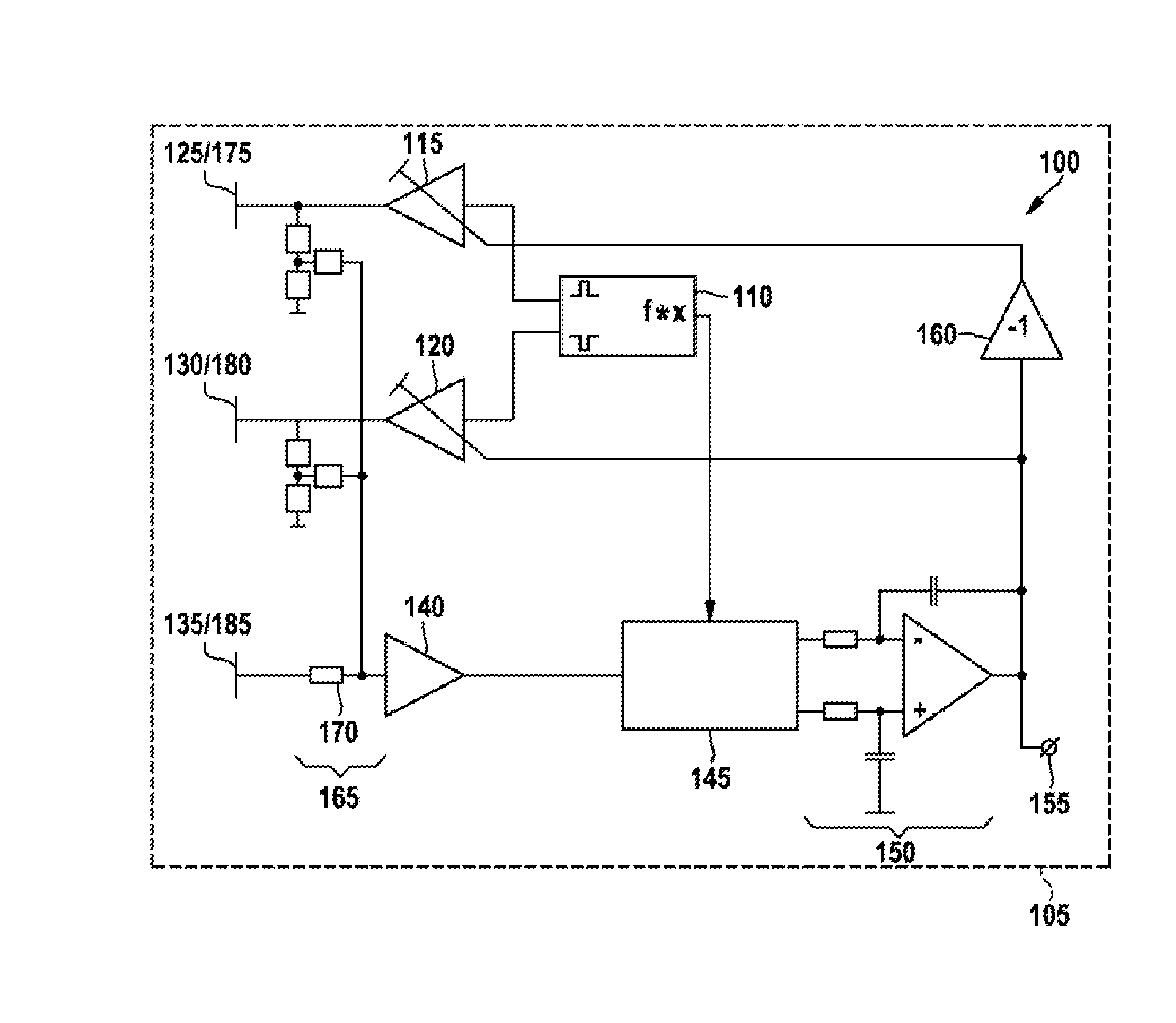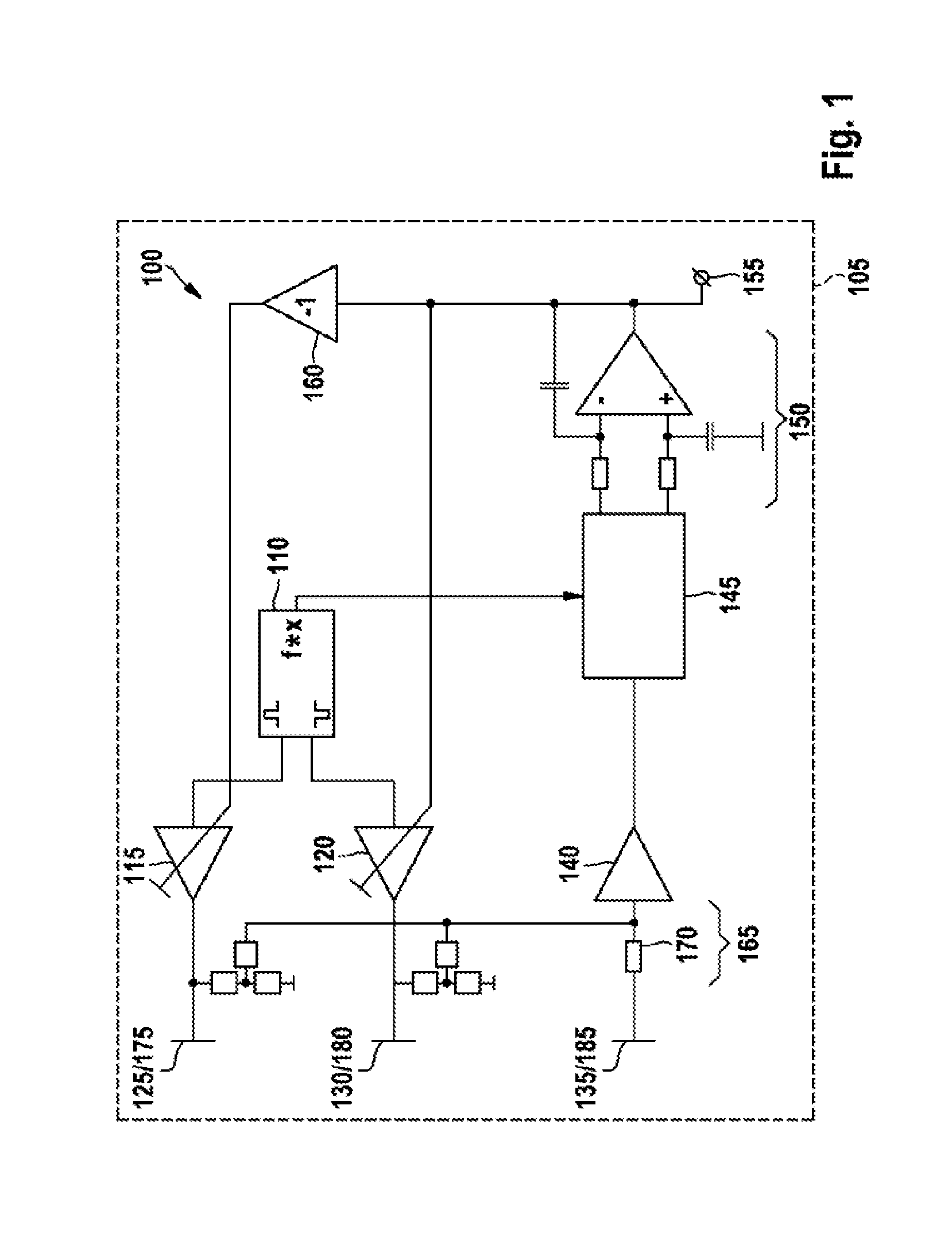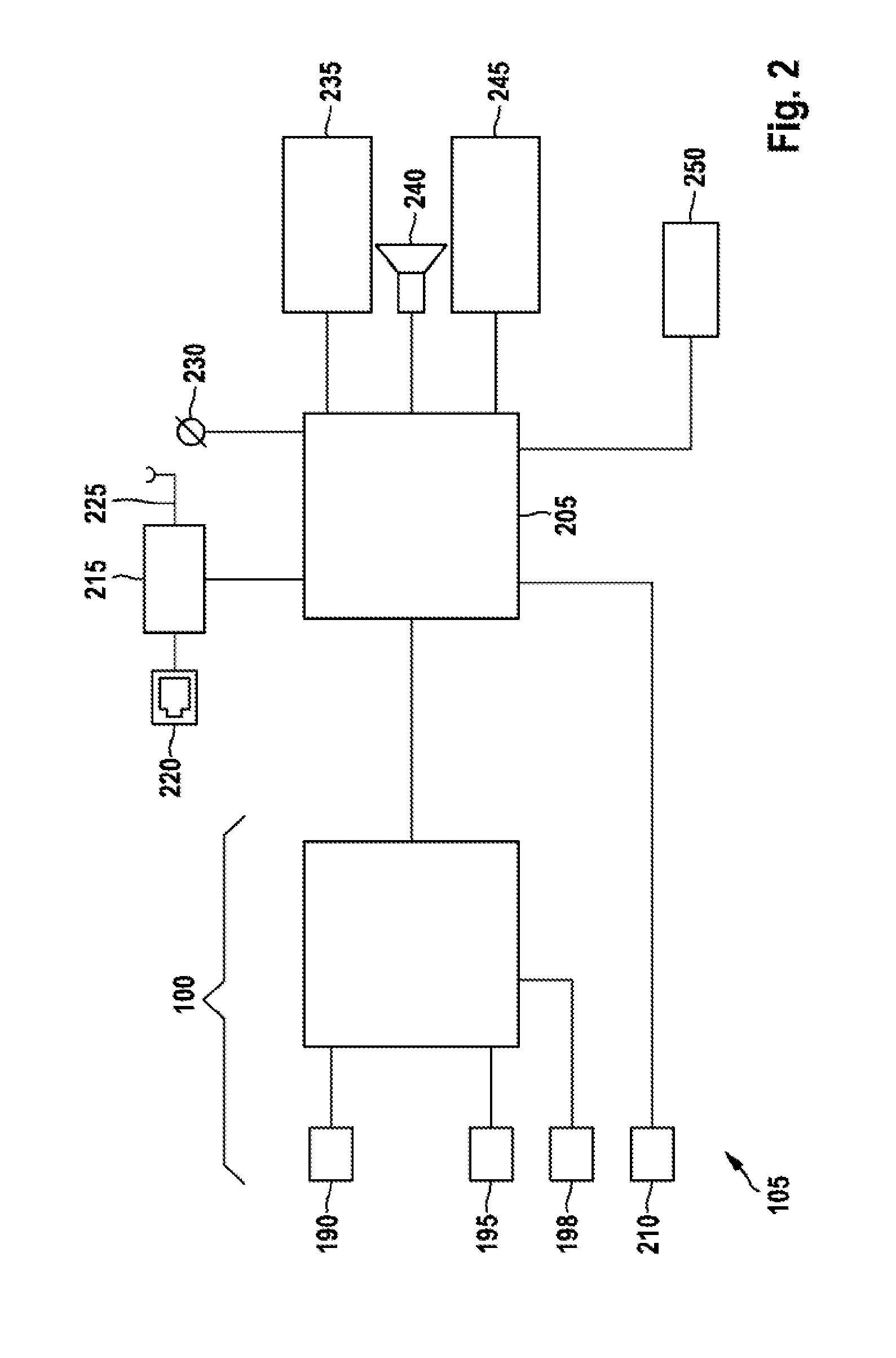Locator
a technology of locators and actuators, applied in the field of locators, can solve the problems of prone to false measurement, complex measurement process, ambiguity, etc., and achieve the effects of simple visual output devices, high detail, and low complexity
- Summary
- Abstract
- Description
- Claims
- Application Information
AI Technical Summary
Benefits of technology
Problems solved by technology
Method used
Image
Examples
Embodiment Construction
[0025]FIG. 1 shows a block diagram of a push-pull measurement bridge 100. The push-pull measurement bridge 100 is part of a locator 105 for sensing articles. Depending on the embodiment, the push-pull measurement bridge 100 can be used for sensing a dielectric article, for example made of wood, or for sensing a metallic article, for example made of steel. The text below first of all describes the embodiment which can be used to sense a dielectric article.
[0026]A clock generator 110 has two outputs at which it provides periodic alternating signals having a phase shift, preferably a 180° phase shift. The alternating signals may comprise square-wave, triangular-waveform or sinusoidal signals, in particular. The outputs of the clock generator are connected to a first controllable amplifier 115 and a second controllable amplifier 120, respectively. Each of the controllable amplifiers 115, 120 has a control input which it uses to receive a signal which controls a gain factor of the contro...
PUM
 Login to View More
Login to View More Abstract
Description
Claims
Application Information
 Login to View More
Login to View More - R&D
- Intellectual Property
- Life Sciences
- Materials
- Tech Scout
- Unparalleled Data Quality
- Higher Quality Content
- 60% Fewer Hallucinations
Browse by: Latest US Patents, China's latest patents, Technical Efficacy Thesaurus, Application Domain, Technology Topic, Popular Technical Reports.
© 2025 PatSnap. All rights reserved.Legal|Privacy policy|Modern Slavery Act Transparency Statement|Sitemap|About US| Contact US: help@patsnap.com



